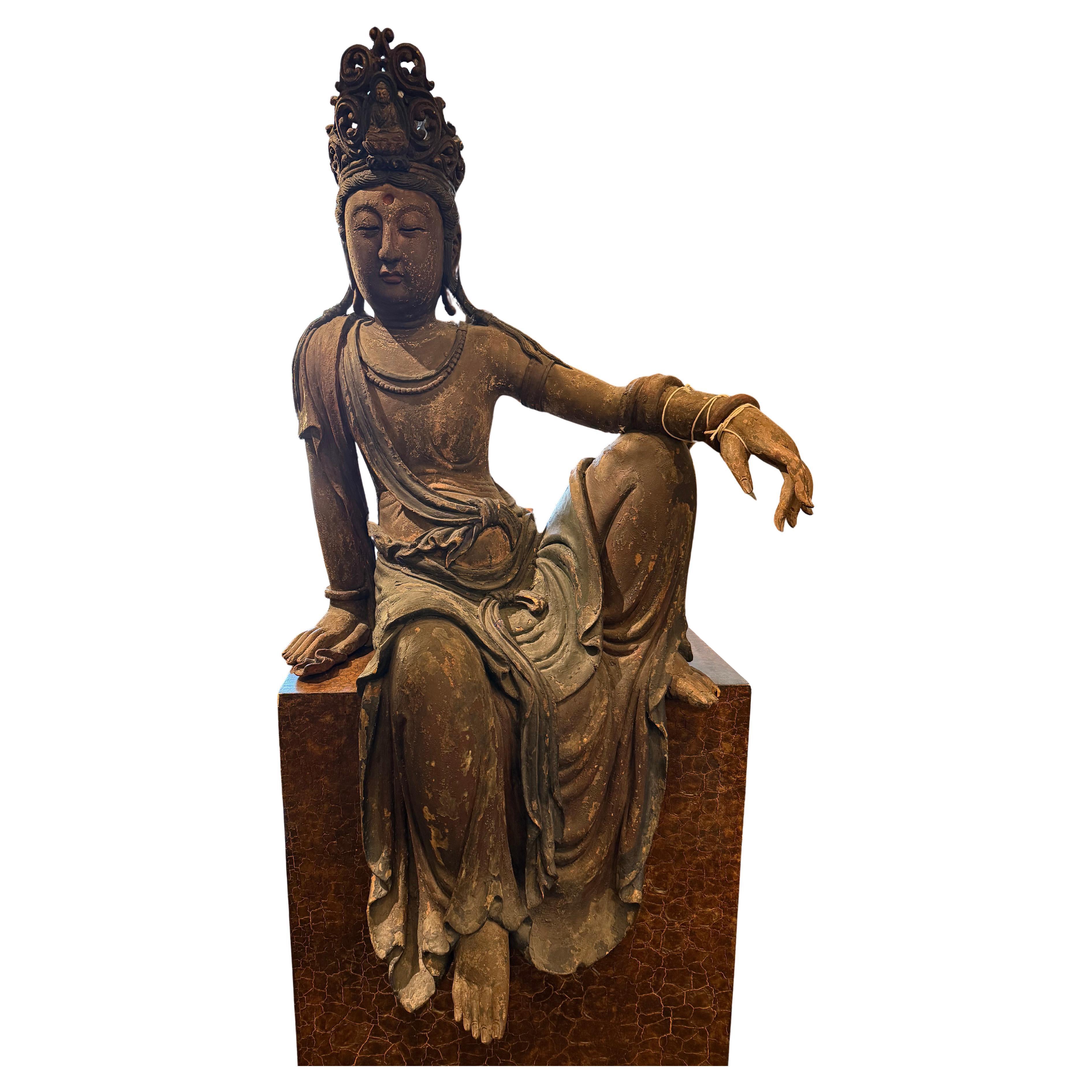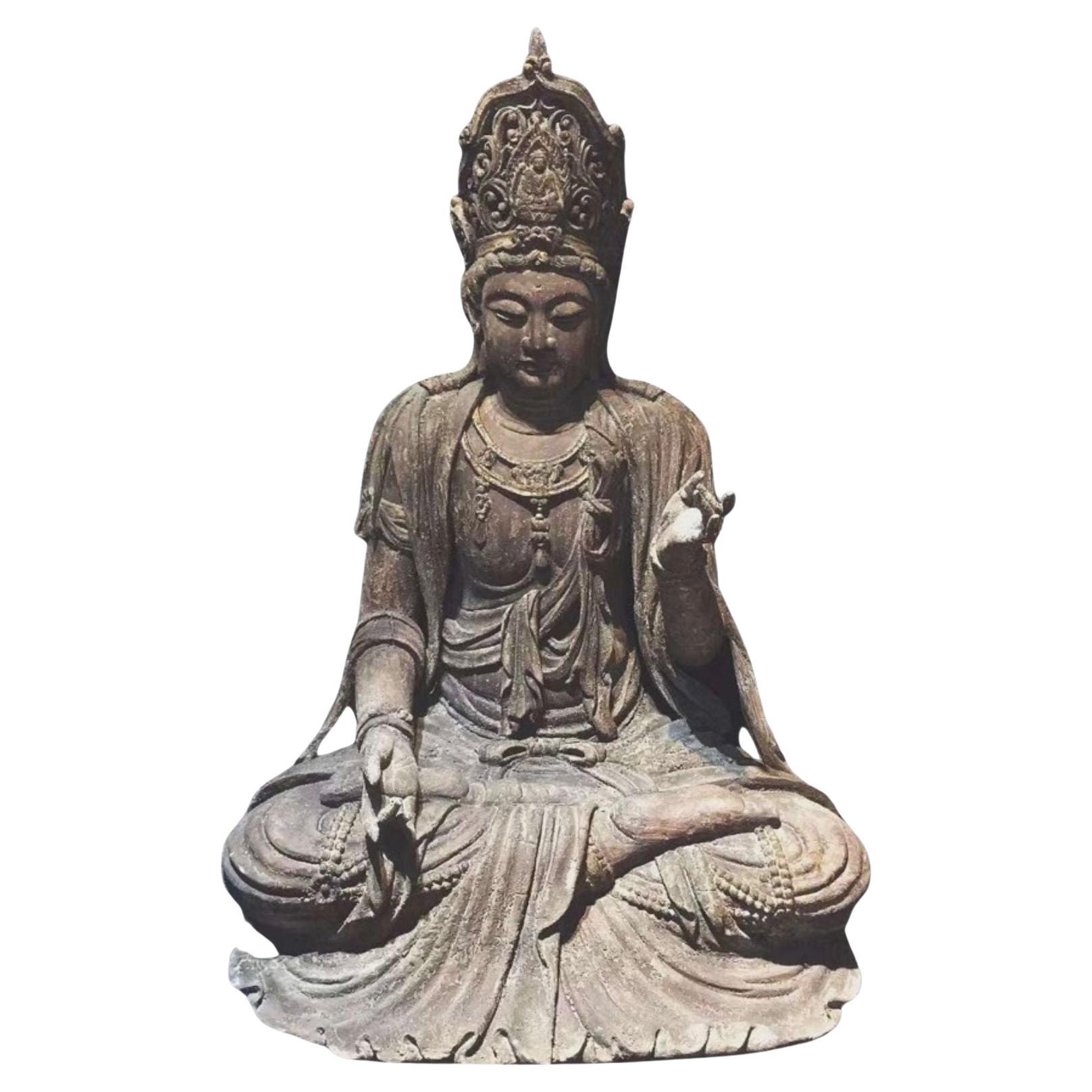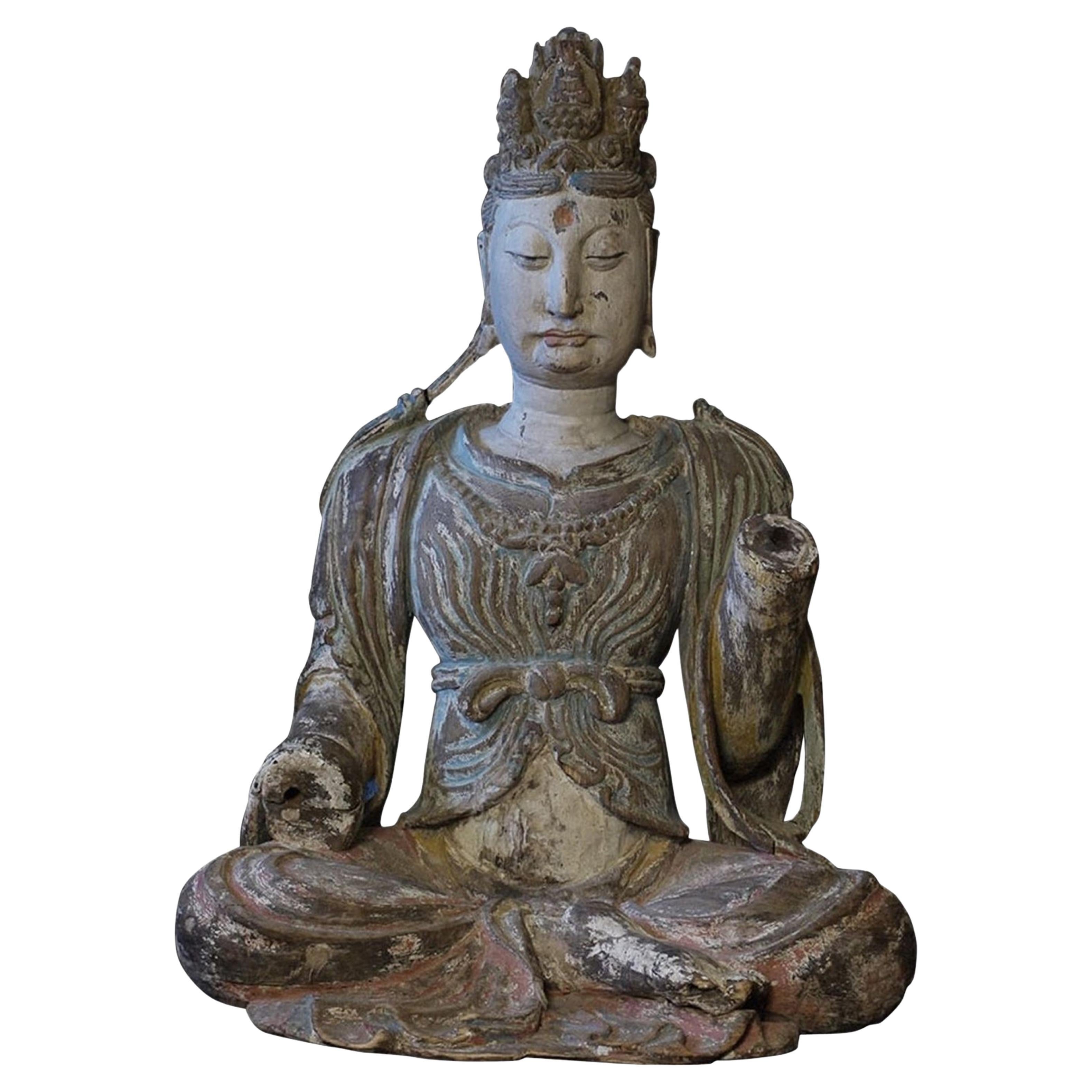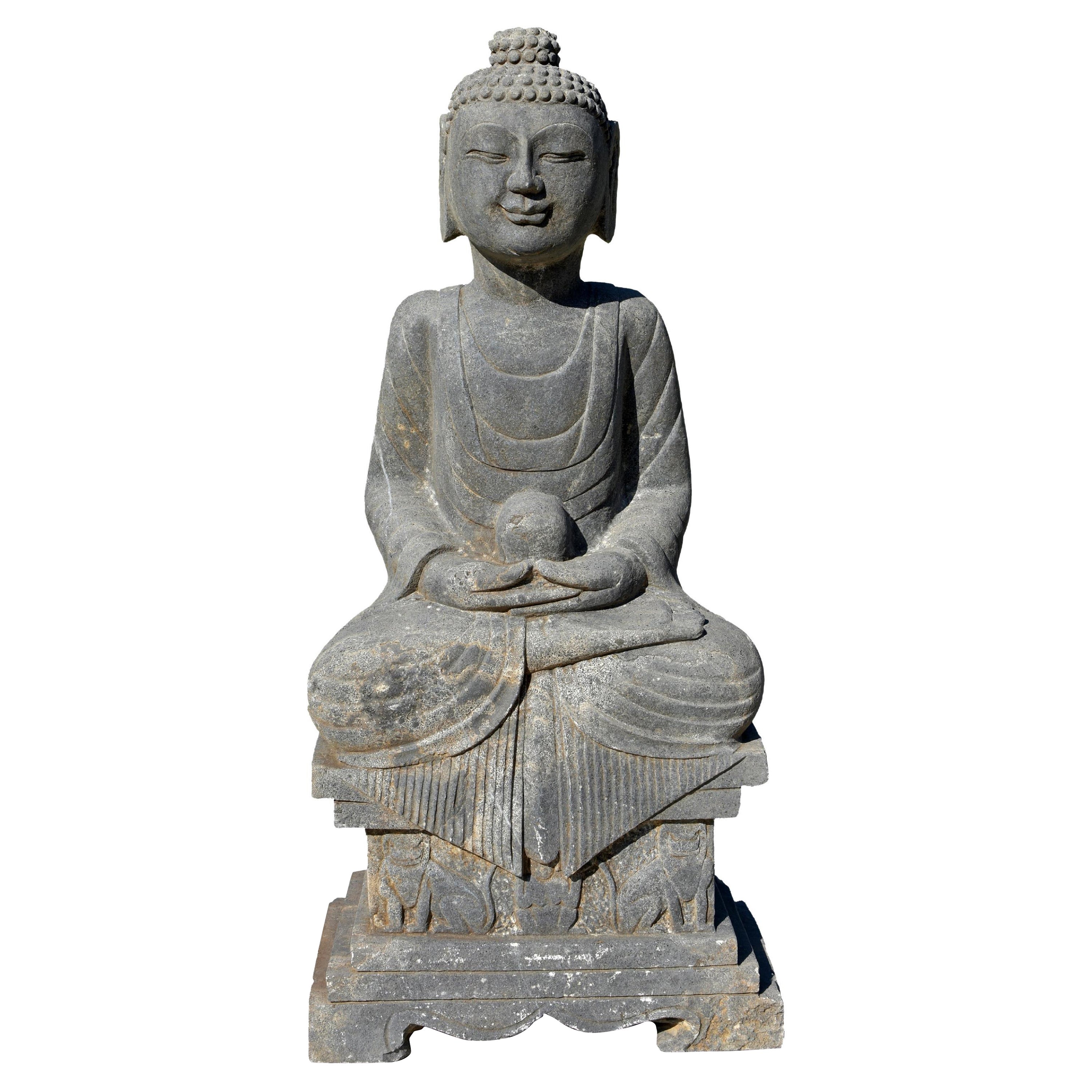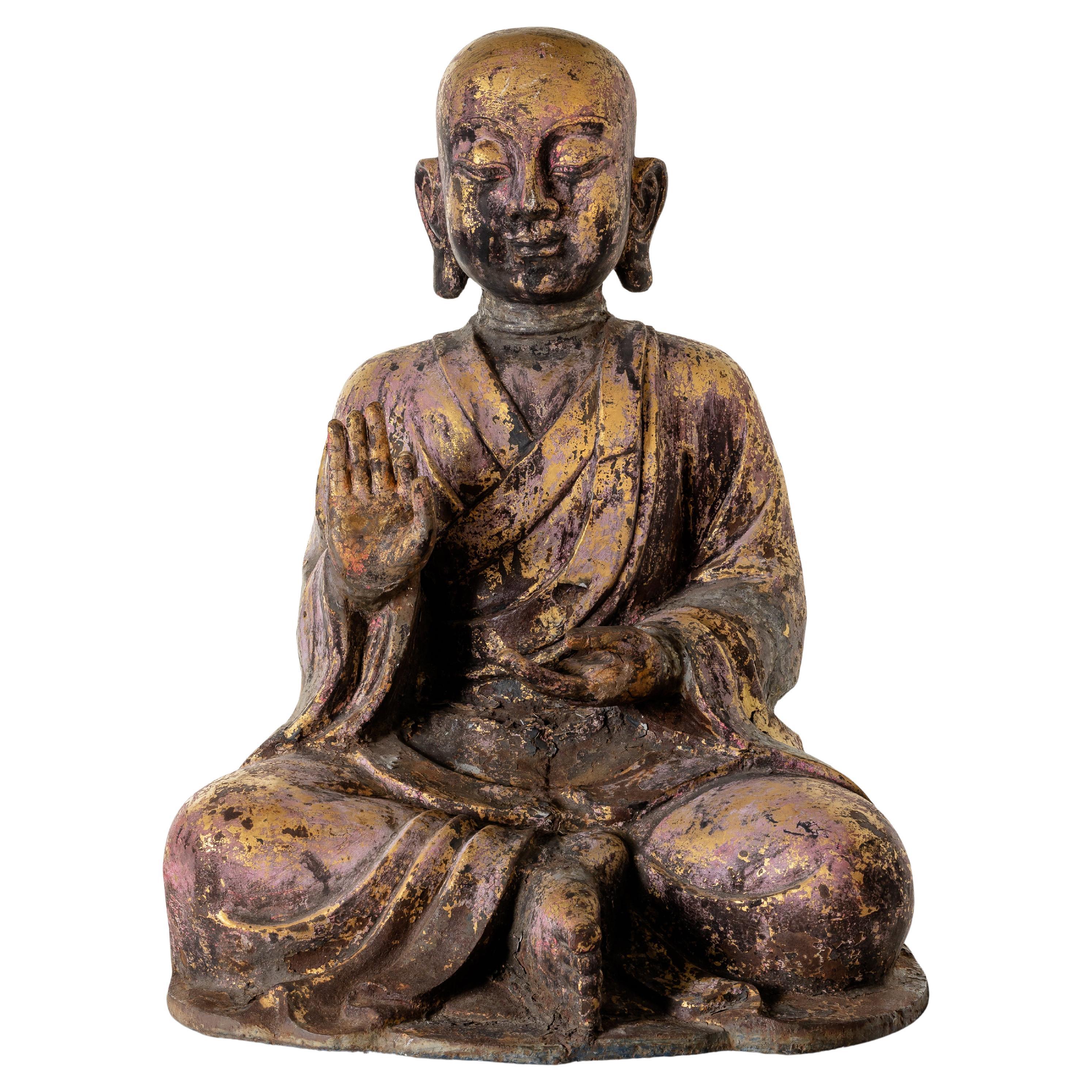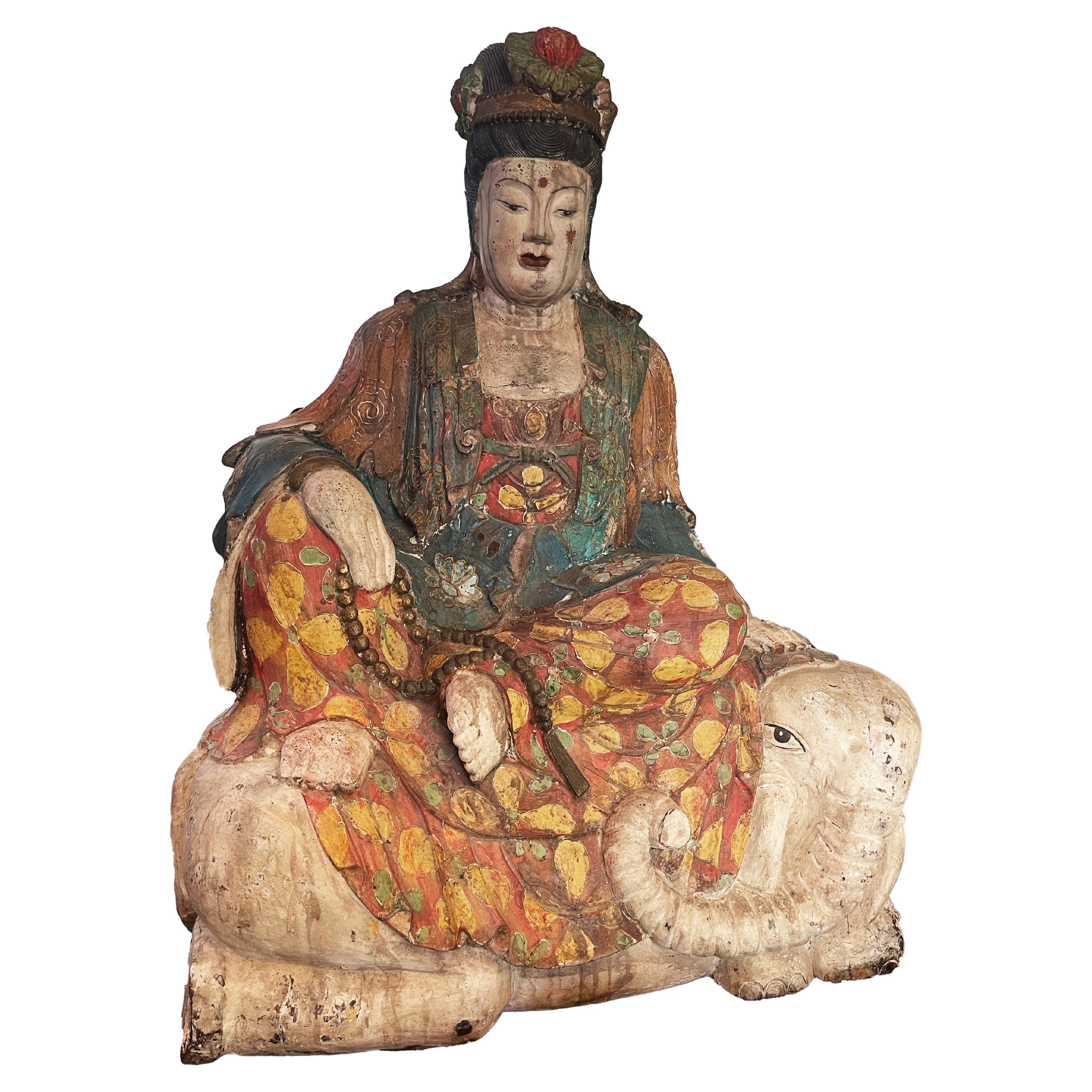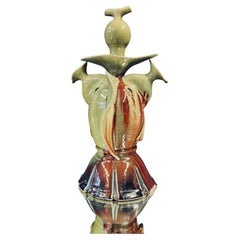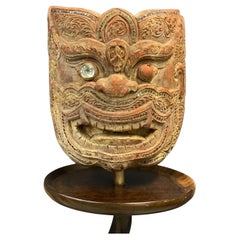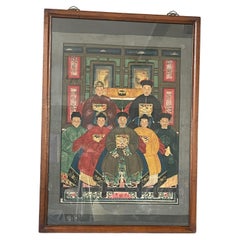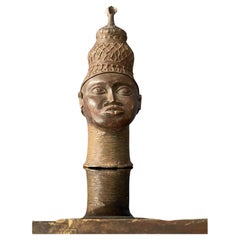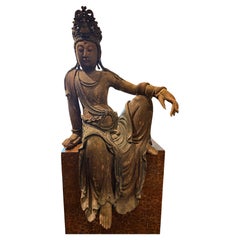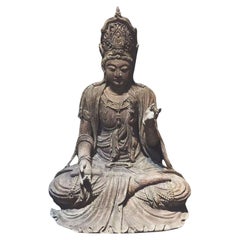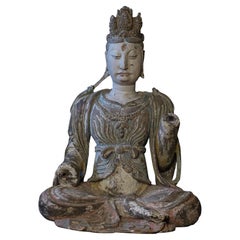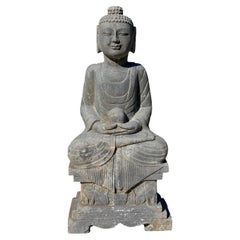Items Similar to Guanyin Buddha
Want more images or videos?
Request additional images or videos from the seller
1 of 7
Guanyin Buddha
$1,061.33
£785.87
€890
CA$1,465.94
A$1,570.02
CHF 844.03
MX$19,068.84
NOK 10,664.77
SEK 9,764.39
DKK 6,782.93
About the Item
Rare vintage Buddha, the Bodhisattva of compassion and mercy.
About the Seller
5.0
Vetted Professional Seller
Every seller passes strict standards for authenticity and reliability
Established in 2014
1stDibs seller since 2021
22 sales on 1stDibs
Typical response time: 4 hours
- ShippingRetrieving quote...Shipping from: München, Cote d'Ivoire
- Return Policy
More From This Seller
View AllLarge Ceramic Sculpture
Located in Munich, DE
Creative phantasy sculpture signed by the artist
Category
Mid-20th Century French Modern Abstract Sculptures
Materials
Ceramic
$3,160
Indonesian Demon Mask
Located in Munich, DE
Invoke mystery and tradition with this antique Chinese demon mask. Rich in detail and history, it’s a captivating piece that brings an aura of ancient folklore to any space.
Category
20th Century Masks
Materials
Glass, Wood
Chinese Family Painting
Located in Munich, DE
Embrace heritage and unity with our Chinese family painting—a heartwarming portrayal of tradition and togetherness.
Category
20th Century Paintings
Materials
Paint
$1,025
Yoruba Artist, Head, , Bronze Sculpture
Located in Munich, DE
Made by the Yoruba Tribe from Benin they date back to the 19th century. Created for the royal family.
Category
Vintage 1950s Figurative Sculptures
Materials
Bronze
Pair of Chinese Paintings
Located in Munich, DE
Enrich your space with a harmonious blend of tradition and love—a captivating duo of our Chinese couple and family paintings.
Category
20th Century Paintings
Materials
Paint
$1,478 / set
Chinese Couple Painting
Located in Munich, DE
Experience timeless romance with our Chinese couple painting - a captivating blend of tradition and love.
Category
20th Century Paintings
Materials
Paint
$1,550
You May Also Like
An Important Chinese Carved Wood Figure of Guanyin, Ming Dynasty, 17th Century
Located in ARMADALE, VIC
An Important Chinese Carved Wood Figure of Guanyin, Ming Dynasty, 17th Century
Description:
A dignified portrayal of the bodhisattva, respl...
Category
Antique 17th Century Chinese Ming Sculptures and Carvings
Materials
Wood
A Large Chinese Carved Wood Figure of Guanyin, Late Qing Dynasty
Located in ARMADALE, VIC
Description:
A singular example of Guanyin. Deviating from the Bodhisattva’s conventional pose of ‘royal ease’, the figure is instead seated in the meditative padmasana, or ‘lotus position’, rendering this Guanyin something of a rarity. An Apana more typically associated with depictions of Buddhas, Guanyin assuming this pose immediately signifies this figure as one of particular spiritual reverence. Both feet are revealed crossed upon one another from beneath fabric which spills before her, her left palm turned upward with her hand resting upon her left knee and her right raised in a relaxed gesture. Adorned with a diadem housing a depiction of Amitabha Buddha, her own spiritual guide, she exudes an air of tranquil regality, further characterised by her numerous strings of beads and elaborately fastened dhoti, attire traditionally reserved for Indian princes. Though the figure’s dress is Indian her face is undoubtedly exemplifying artistic Chinese beauty standards. Her face is soft and rounded, full in both the lips and cheeks, with eyes that restfully peer down, as though she is watching over the worries of mankind with compassion.
Notes on the item:
Guanyin is the Chinese interpretation of Avalokiteshvara, the Indian Bodhisattva of compassion. The term “Bodhisattva” is derived from the Sanskrit “Bodhi”, meaning ‘awakening’ or ‘enlightenment’, combined with “Sattva”, meaning ‘spirit’ or ‘being’, referring to one on the path to achieving enlightenment. Bodhisattvas in Mayahana Buddhism are recognised as figures who have effectively achieved enlightenment yet relinquish their accension to nirvana in order to remain amongst mankind in the ultimate act of compassion to aid as spiritual guides. As such, the Bodhisattva inhabit a liminal space between samsara and nirvana; enlightened beings that maintain a relationship with humanity that buddhas cannot, as attaining Buddhahood necessitates the abandonment of all worldly attachments, including mankind. Guanyin’s very name, ‘One who hears the cries of the world’ highlights this role as a compassionate figure who acknowledges the suffering and strife of man. Along with Mahāsthāmaprāpta, a fellow bodhisattva, Guanyin serves as an attendant to Buddha Amitabha, with these three deities recognised as the Three Sages of Western Pure Land Buddhism, a sect of Mayahana Buddhism popular in East Asia.
Avalokiteshvara is commonly posited to have been adopted from Indian Buddhism into China as Guanyin around 200-400 CE, however it was the Tang dynasty (618-907) which saw the popularisation of the deity. By the Ming (1358–1644) and Qing (1644–1911) dynasties, Guanyin held the position as the most popular female deity in China. The unique state of religion in China held no monolithic canon regarding Buddhism and saw the assimilation of several belief systems, primarily Daoism, Buddhism and Confucianism. Consequently, Guanyin became a deity to be revered beyond Buddhism alone, appointed as both an official imperial deity and Daoist deity in the 12th century. Guanyin may also be seen to fulfil the role of idealised femininity as prescribed by Confucianism, with the scarcity of female Chinese deities perhaps accounting for the gradual gender shift Guanyin underwent.
The Indian Avalokiteshvara is unequivocally recognised as male, whilst the supposed gender of Guanyin remains contentious. Although there is a clear shift from the masculine Avalokiteshvara towards a more feminine representation, it is unclear if Guanyin is understood to be entirely feminine, to inhabit qualities of both genders or to be elevated beyond gender entirely, embodying neither. Depictions of Guanyin are highly androgynous, which some believe lends credence towards Guanyin symbolising the unity of dualistic forces as recognised in Daoism, displaying the anthropomorphism of yin and yang.
Comparative Analysis:
Market comparisons of similar Qing Dynasty polychrome figures of Guanyin include lot 767 (no.2) From Christies ‘Important Chinese Ceramics and Works of Art,’ New York, 25 March 2022, with the price realised USD 52,920 (Estimate USD 20,000 – USD 30,000). Christies also auctioned a comparable polychrome Guanyin...
Category
Antique Late 19th Century Chinese Qing Sculptures and Carvings
Materials
Hardwood
Ming-style Sculpture of Chinese Bodhisattva Guanyin, circa 1900s, 6518
Located in Ukiah, CA
A large Ming-style sculpture of Chinese Bodhisattva Guanyin, circa 1900s, from a century-old US collection. Dated circa 1900s based on the face (b...
Category
Early 20th Century Korean Ming Antiquities
Materials
Wood
$10,150 Sale Price
42% Off
Stone Buddha Amitabha Statue
Located in Somis, CA
A large, finely carved Tang style stone statue of Buddha Amitabha. Depicted with a full-cheeked face below neatly gathered hair and ushnisha, with large eyes, downcast smile and full...
Category
20th Century Chinese Tang Sculptures and Carvings
Materials
Stone
$5,500 Sale Price
35% Off
Monumental Chinese Buddha Statue
Located in Dallas, TX
Replica of a large stone Chinese Buddha from the 15th-16th century featuring weathered paint in various colors.
Category
21st Century and Contemporary Sculptures and Carvings
Materials
Stone
Chinese Quan Yin Temple Sculpture
Located in Topanga, CA
An extraordinary and very old carved wood temple sculpture of Quan Yin, the revered Bodhisattva of Compassion, seated gracefully atop a recumbent elephant. Retaining its original pol...
Category
Antique 18th Century Chinese Figurative Sculptures
Materials
Wood
$2,500 / item
More Ways To Browse
Guanyin Sculpture
Wood Guanyin
Antique Marble Ball
Bronze Sculptures 1990s
Bronze With Ivory
Bruno Zach Bronze
Buddha Indian
Chinese Bronze Statue
Female Stone Sculpture
Italian Mannequin
Jean Baptiste Clesinger
Native American Horse
Philippines Hand Carved
Robe Man
Rosenthal Selb Germany
Satyr And Nymph
Standing Metal Sculpture
Statues Of Male
